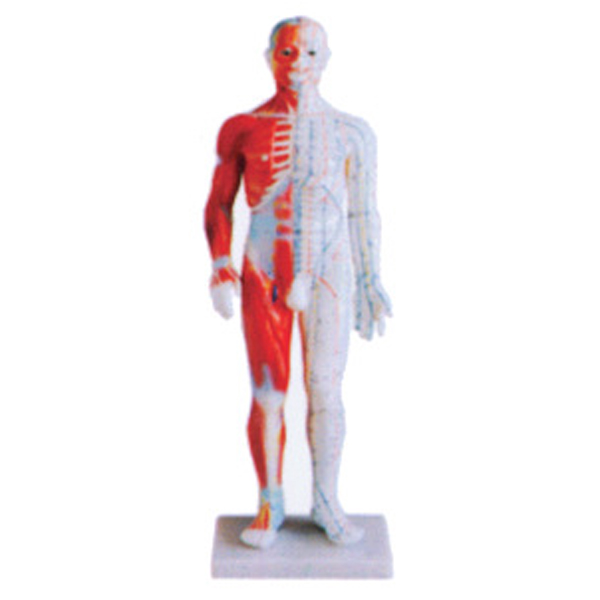

In summary, the standard anatomical acupuncture model supports a variety of teaching methods, including traditional observation and practice teaching, interactive teaching, computer-assisted teaching, and group discussion and case analysis. Each of these teaching methods has its own characteristics and ...
The standard anatomical acupuncture model does support a variety of teaching methods, and the following is a detailed explanation of the teaching methods it supports:
Traditional observation and practical teaching:
The standard anatomical acupuncture model, with its highly simulated design, can clearly show the main bones, muscles, meridians and points of the human body. This allows learners to visually observe and understand the various parts involved in acupuncture treatment.
On this basis, learners can simulate the real acupuncture treatment process by actually performing acupuncture operations on the model. This practical teaching method can not only help learners to get familiar with and master acupuncture techniques, but also make them better understand the effects and principles of acupuncture treatment.

Interactive teaching:
Some high-level standard anatomical acupuncture models are equipped with interactive features such as touch screens, electronic displays, etc. These features enable learners to interact with the model and obtain more learning information.
For example, when the learner selects a certain point on the model, the model may display detailed information about the point, such as name, location, function, and so on. This interactive teaching method can not only increase learners' interest in learning, but also deepen their understanding and memory of acupuncture knowledge.
Computer Aided Instruction:
Modern standard anatomical acupuncture model is often combined with computer technology to form a complete acupuncture teaching system. In this system, the model can be connected with the computer to realize real-time data transmission and processing.
Learners can perform virtual acupuncture operations on the model through computer simulation software. The software will give real-time feedback and suggestions based on the learner's operation. This teaching method not only helps learners to better master acupuncture skills, but also allows them to practice and prepare adequately before the actual operation.
Group discussions and case studies:
The standard anatomical acupuncture model can also be used as an auxiliary tool for group discussions and case studies. In group discussions, learners can have in-depth discussions and exchanges around the model, and jointly explore the problems and challenges in acupuncture treatment.
In case studies, learners can deepen their understanding of the principles and applications of acupuncture treatment by simulating real case scenarios on models. This teaching method can not only improve learners' clinical practice ability, but also cultivate their teamwork and communication skills.
In summary, the standard anatomical acupuncture model supports a variety of teaching methods, including traditional observation and practice teaching, interactive teaching, computer-assisted teaching, and group discussion and case analysis. Each of these teaching methods has its own characteristics and can be selected and combined according to different learning needs and objectives.